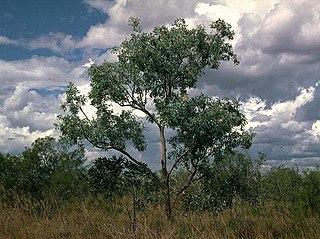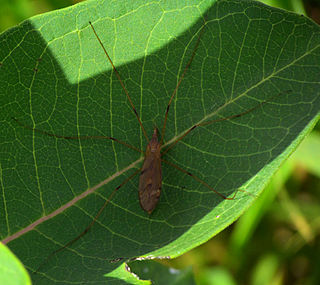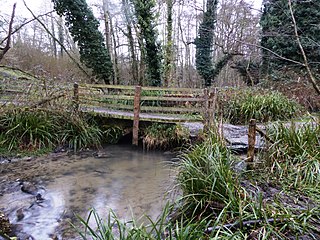
Convolvulaceae, commonly called the bindweeds or morning glories, is a family of about 60 genera and more than 1,650 species. These species are primarily herbaceous vines, but also include trees, shrubs and herbs. The tubers of several species are edible, the best known of which is the sweet potato.

Cetraria is a genus of fruticose lichens that associate with green algae as photobionts. Most species are found at high latitudes, occurring on sand or heath. Species have a characteristic "strap-like" form, with spiny lobe edges.

The Chioneinae are a subfamily of limoniid crane flies.

Erioptera is a genus of crane fly in the family Limoniidae.
E. orientalis may refer to:

Eucalyptus argillacea, commonly known as Mount House box, or northern grey box is a tree that is endemic to northern Australia. It has rough, fibrous bark, lance-shaped adult leaves, flower buds usually in groups of seven, creamy white flowers and conical fruit.
Phytomimia chlorophylla is a moth in the family Depressariidae, and the only species in the genus Phytomimia. It was described by Thomas de Grey, 6th Baron Walsingham, in 1912 and is found in Mexico, Guatemala, Panama, Costa Rica and Peru.

Eucalyptus chlorophylla, commonly known as green-leaf box, northern glossy-leaved box or glossy-leaved box, is a species of eucalypt that is endemic to northern Australia. It is a tree or mallee, with hard, rough bark, lance-shaped or curved adult leaves, flower buds in groups of seven, creamy white flowers and usually conical fruit.

Erioptera fuscipennis is a Palearctic species of cranefly in the family Limoniidae.It is found in a wide range of habitats and micro habitats: in earth rich in humus, in swamps and marshes, in leaf litter and in wet spots in woods.

Erioptera lutea is a species of fly in the family Limoniidae. It is found in the Palearctic.

Erioptera nielseni is a species of fly in the family Limoniidae. It is found in the Palearctic.

Eriopterini is a tribe of limoniid crane flies in the family Limoniidae. There are more than 20 genera and 3,800 described species in Eriopterini.

Seabrook Stream is a 24.1-hectare (60-acre) biological Site of Special Scientific Interest in Kent.
Erioptera distincta is a species of limoniid crane fly in the family Limoniidae.

Erioptera parva is a species of limoniid crane fly in the family Limoniidae.
Erioptera venusta is a species of limoniid crane fly in the family Limoniidae.
Erioptera armata is a species of limoniid crane fly in the family Limoniidae.
Erioptera septemtrionis is a species of limoniid crane fly in the family Limoniidae. The word septemtrionis means "Northern" in Latin
Erioptera needhami is a species of limoniid crane fly in the family Limoniidae.

Burton Park SSSI is a 57.7-hectare (143-acre) biological Site of Special Scientific Interest west of Pulborough in West Sussex. A larger area of 63 hectares, including Chingford Pond to the west, is designated a Local Nature Reserve called Burton and Chingford Ponds, which is managed by the Sussex Wildlife Trust and West Sussex County Council. The site is adjacent to Burton Park, a Grade I listed building.











